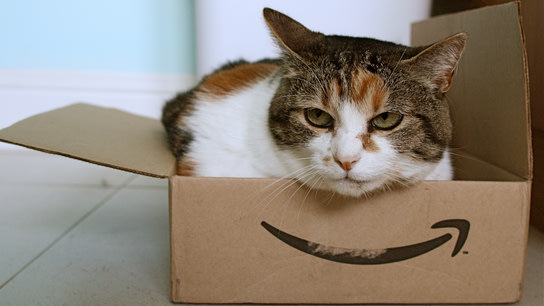Amazon won American consumers with a focus on low prices, consumer satisfaction and user experience, and instant deliveries. The story in Europe is similar except that the user experience depends more on where you live.
There is no Amazon.eu acting as a single destination for the European market. Instead, there are different Amazon websites for the United Kingdom, Germany, France, Italy, The Netherlands, and Spain (some of the biggest economies in Europe). I live in Norway, and the Amazon.no website redirects me to the German-language Amazon.de website. Amazon Germany can ship to Norway, and it’s the only European Amazon website with a machine-translation button that can translate pages to English.
Update (): It’s just a day after I wrote this article, and Amazon has announced it’ll open in Sweden and Norway, according to Shifter (in Norwegian). This article was written before the announcement.
However, I prefer browsing and searching on Amazon.co.uk (United Kingdom). Amazon Germany’s machine-translations can make it hard to find the right items. In Norway, it’s common that online (and some offline) retailers use product titles and descriptions that have been machine-translations from German or Swedish. Consumers are expected to develop the skills required to guess what products might be called in one of these languages and then guess what the Norwegian machine-translation would be. I want to avoid that frustrating experience when given the option.
The product selection on Amazon UK and Germany is mostly the same. However, not all products ship to Norway. To filter many items that can’t ship to my country, I need to locate the checkbox for international shipping that appears somewhere near the bottom of the page. I’m required to do this every time I alter the search or click-through to another product category.
Amazon doesn’t remember that I’ve clicked it after navigating to another page. There’s a separate option that says “Ship to Norway” at the top of each page. This option doesn’t filter search results so I’m not entirely sure why it’s there. Frustratingly, the checkbox doesn’t remove all items that can’t be shipped to my location so I still get lots of results that can’t be shipped here.
Once I’ve found the item I want, I change the domain of the page from .co.uk to .de to go to the same page on Amazon Germany. This works for almost all product pages. Shipping to Norway and the items are almost always cheaper on Amazon Germany compared to the UK. Amazon Germany also takes care of deducting the German sales tax and paying the value-added sales tax (VAT) to the Norwegian government on my behalf. This saves me from paying sales tax in two countries. It also saves me a 14 Euro private import fee on packages that haven’t been VAT cleared when they arrive in Norway.
If I were to use the Amazon UK website, the sales tax is processed differently. When placing an order, Amazon UK charges me a deposit that’s about 5 % above the due taxes. Then they have the courier pay the VAT on arrival in Norway. This delays delivery by a day or two. A week or so later, I get the remainder of my deposit back. I don’t know the final purchase price when shopping with Amazon UK. Amazon Germany shows the final purchase price before you pay.
Once I’ve ordered an item, it’s dispatched from an Amazon warehouse — most often located in the UK — and shipped with DHL (a subsidiary of the German postal service) to either The Netherlands or Denmark. Then it’s forwarded on to me in Norway. Delivery usually takes no more than two workdays. This is often faster (and cheaper) than purchasing anything from most Norwegian retailers with domestic shipping.
Norwegian retailers must offer a five-year warranty for most product categories sold to consumers. Retailers are expected to ensure that the products they sell can be expected to last. This is much longer than the one–three years in other European countries.
I would prefer ordering from a Norwegian retailer — even though that means paying more — to have the purchase covered under Norway’s extensive consumer protection laws. However, Norway is a small market, and the available product selection is very limited in many categories. The extended warranty period means retailers are less willing to import products. The only option is often to order through Amazon, and I find myself working my way through Amazon’s convoluted European purchase experience once again.
